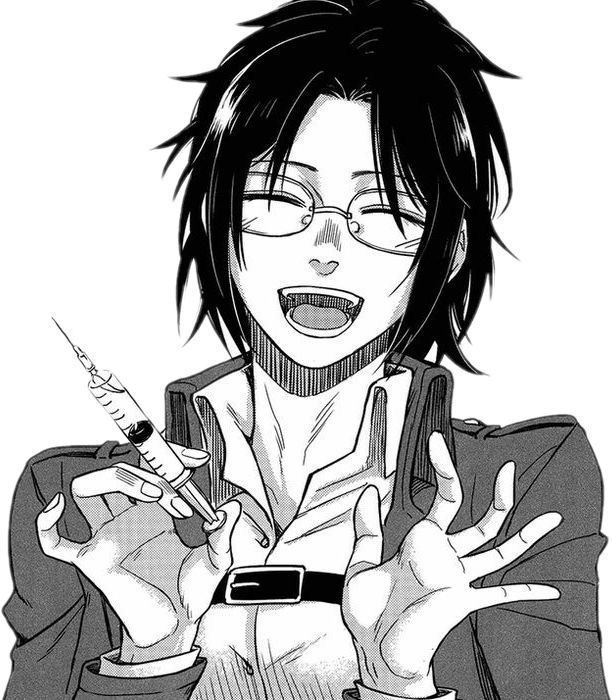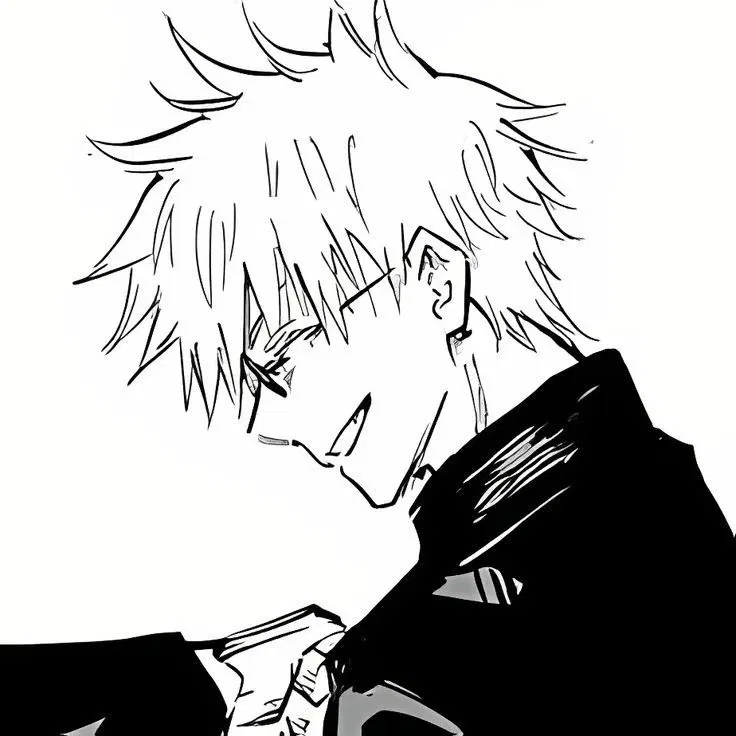Crafting Anime AI Prompts: Your Visual Storytelling Guide

Crafting Anime AI Prompts: Your Visual Storytelling Guide
The world of AI-generated art is exploding, and at its heart lies the art of the prompt. For anime enthusiasts, this means unlocking the potential to create stunning visuals, from epic battle scenes to heartwarming character portraits, all through carefully crafted text. But what makes an AI prompt truly effective for generating anime? It's a blend of specificity, artistic direction, and understanding how AI models interpret language. This guide will delve deep into the nuances of crafting powerful ai prompts for anime, ensuring your creative vision comes to life with breathtaking detail.
The Foundation: Understanding AI Art Generation
Before we dive into specific prompt structures, it's crucial to grasp the underlying principles of AI art generation. Most AI image models, like Stable Diffusion, Midjourney, or DALL-E, work by taking a text description (the prompt) and translating it into a visual representation. They've been trained on vast datasets of images and their associated text descriptions, allowing them to recognize patterns, styles, and concepts.
When you input a prompt, the AI essentially tries to "draw" what you've described. The more precise and descriptive you are, the closer the output will be to your intended vision. Think of it like commissioning an artist; the clearer your brief, the better the final piece.
Deconstructing the Perfect Anime AI Prompt
A truly effective prompt for anime art generation typically includes several key components:
1. Subject Matter: Who or What is the Focus?
This is the core of your prompt. Be as specific as possible. Instead of "a girl," try "a young woman with vibrant pink hair tied in twin tails, wearing a school uniform."
- Character Details: Hair color, style, eye color, facial expression, clothing, accessories, age, gender.
- Setting: A bustling cyberpunk city, a serene cherry blossom garden, a dragon's lair, a futuristic spaceship bridge.
- Action/Pose: Standing defiantly, gazing wistfully at the horizon, mid-air combat, sharing a quiet moment.
2. Style and Aesthetics: The Anime DNA
This is where you infuse the "anime" feel. Specify the art style you're aiming for.
- General Anime Styles: "Studio Ghibli style," "shonen anime," "shojo manga style," "90s anime aesthetic," "modern anime illustration."
- Specific Artist/Studio Influence: "in the style of Makoto Shinkai," "like a KyoAni production," "inspired by Yoshitaka Amano."
- Artistic Medium: "cel-shaded," "watercolor anime," "digital painting," "line art."
3. Composition and Lighting: Setting the Mood
How do you want the scene framed? What's the atmosphere?
- Camera Angles: "close-up portrait," "wide shot," "low angle," "dutch angle."
- Lighting: "golden hour lighting," "dramatic chiaroscuro," "neon city lights," "soft ambient light," "backlit."
- Atmosphere: "foggy," "rainy," "sunny," "ethereal," "gritty."
4. Quality and Detail Modifiers: Elevating the Output
These are often added to push the AI towards higher quality results.
- General Quality: "masterpiece," "best quality," "high detail," "intricate details," "ultra-realistic anime."
- Specific Details: "glowing eyes," "detailed background," "dynamic pose," "expressive eyes."
5. Negative Prompts: What to Avoid
Just as important as what you want is what you don't want. Negative prompts help steer the AI away from undesirable elements.
- Common Issues: "ugly," "deformed," "blurry," "low resolution," "bad anatomy," "extra limbs," "poorly drawn hands," "text," "watermark."
- Style Exclusions: "photorealistic," "3D render" (if you want a 2D anime look).
Structuring Your Prompts: Putting It All Together
There isn't one single "correct" way to structure a prompt, but a common and effective approach is:
(Subject Description), (Action/Pose), (Setting), (Style/Aesthetics), (Composition/Lighting), (Quality Modifiers)
Let's break down some examples:
Example 1: A Heroic Warrior
Keywords: ai prompts for anime
Href: https://craveu.ai/s/ai-boyfriend-chat
Prompt: "A fierce female warrior with flowing crimson hair and determined blue eyes, clad in ornate silver armor, wielding a glowing energy sword. She stands on a rocky cliff overlooking a vast, war-torn battlefield under a stormy, purple sky. Dynamic action pose, mid-swing. Anime illustration, detailed character design, epic fantasy art. Dramatic lighting, volumetric clouds. Masterpiece, best quality, high detail."
Negative Prompt: "ugly, deformed, blurry, low resolution, simple background, peaceful, calm, modern clothing, photorealistic."
Example 2: A Serene Slice-of-Life Scene
Prompt: "A shy high school girl with short, messy brown hair and glasses, blushing as she looks down at a small, fluffy white cat perched on her shoulder. She's wearing a cute pastel-colored sweater and a pleated skirt. Sitting on a park bench under a large, blooming cherry blossom tree, petals gently falling. Soft, warm afternoon sunlight filtering through the branches. Bokeh background. Shojo manga style, gentle coloring, heartwarming atmosphere. High quality, detailed illustration."
Negative Prompt: "action, fighting, dark, scary, low quality, blurry, deformed, extra limbs, watermark, text."
Advanced Techniques for Anime AI Prompts
Once you've mastered the basics, you can explore more advanced techniques to refine your results:
1. Weighting Keywords: Emphasizing Specific Elements
Some AI models allow you to assign weights to keywords, giving them more or less importance. This is often done using parentheses and numbers, like (keyword:1.3) for increased emphasis or (keyword:0.8) for reduced emphasis.
- Example: If you want to ensure the "pink hair" is prominent, you might use
(pink hair:1.5).
2. Using Seed Numbers: Reproducibility and Variation
A "seed" is a number that initializes the random generation process. Using the same seed with the same prompt will produce the same image. This is invaluable for iterating on a specific image or ensuring consistency. If you find an image you like, note its seed number and use it as a starting point for variations.
3. Aspect Ratios: Tailoring the Canvas
Specify the desired aspect ratio for your image (e.g., 16:9 for landscape, 9:16 for portrait, 1:1 for square). This ensures your composition fits your intended use case, whether it's a desktop wallpaper or a social media post.
4. Iterative Prompting: Building Complexity
Don't be afraid to start simple and gradually add complexity. Generate an initial image with a basic prompt, then refine it by adding more details, adjusting styles, or incorporating negative prompts based on the initial output. This iterative process is key to achieving highly specific results.
Common Pitfalls and How to Avoid Them
Even with the best intentions, AI art generation can sometimes yield unexpected or undesirable results. Here are common pitfalls when creating ai prompts for anime and how to navigate them:
1. Ambiguity Leads to Generic Results
If your prompt is too vague, the AI will make assumptions, often defaulting to common or generic interpretations.
- Solution: Be hyper-specific. Instead of "anime character," describe their age, gender, hair, eyes, clothing, and expression.
2. Overly Complex Prompts Can Confuse the AI
While detail is good, an excessively long and convoluted prompt with conflicting instructions can overwhelm the AI.
- Solution: Break down complex ideas. If you want multiple characters interacting, consider generating them separately or simplifying the interaction description. Prioritize the most crucial elements.
3. Ignoring Negative Prompts
Failing to use negative prompts means you're leaving too much to chance. Undesired artifacts or stylistic deviations are common without them.
- Solution: Always include a negative prompt, starting with common issues like "ugly, deformed, blurry" and adding specifics based on your desired outcome.
4. Style Drift: Losing the Anime Feel
Sometimes, the AI might incorporate elements that detract from the intended anime aesthetic, especially if you include too many unrelated style descriptors.
- Solution: Keep your style descriptors focused. If you want a specific anime style, emphasize that. Avoid mixing too many disparate art styles unless you're intentionally aiming for a hybrid look.
5. Anatomical Oddities (Especially Hands and Limbs)
AI models notoriously struggle with human anatomy, particularly hands, fingers, and consistent limb proportions.
- Solution: Utilize negative prompts like "bad anatomy," "extra limbs," "deformed hands." Sometimes, specifying poses that naturally obscure hands (e.g., hands in pockets, holding an object) can help. Iteration and regeneration are often necessary.
The Future of Anime AI Art
The capabilities of AI art generators are evolving at an unprecedented pace. We're seeing increasingly sophisticated control over style, composition, and even narrative elements. As the technology matures, expect even more intuitive ways to guide AI in creating anime art.
The ability to generate custom anime visuals opens up a universe of possibilities for artists, designers, storytellers, and hobbyists. Whether you're looking to create concept art for a new character, illustrate a scene from your favorite story, or simply explore your own creative ideas, mastering ai prompts for anime is your key to unlocking this exciting new frontier.
Keep experimenting, keep refining your prompts, and most importantly, keep creating. The next masterpiece is just a few well-crafted words away. What visual stories will you bring to life today?
META_DESCRIPTION: Master the art of AI-generated anime with expert prompts. Learn to craft stunning visuals, from characters to scenes, using specific techniques and avoiding common pitfalls.
Character
@Luca Brasil Bots ♡
1.1K tokens
@CoffeeCruncher
1.2K tokens
@Notme
1.2K tokens
@SmokingTiger
2.1K tokens

@NetAway
1.1K tokens
@Zapper
601 tokens
@Critical ♥
1.4K tokens
@FallSunshine
3.3K tokens

@Knux12
1K tokens
@yusef
527 tokens
Features
NSFW AI Chat with Top-Tier Models
Experience the most advanced NSFW AI chatbot technology with models like GPT-4, Claude, and Grok. Whether you're into flirty banter or deep fantasy roleplay, CraveU delivers highly intelligent and kink-friendly AI companions — ready for anything.

Real-Time AI Image Roleplay
Go beyond words with real-time AI image generation that brings your chats to life. Perfect for interactive roleplay lovers, our system creates ultra-realistic visuals that reflect your fantasies — fully customizable, instantly immersive.

Explore & Create Custom Roleplay Characters
Browse millions of AI characters — from popular anime and gaming icons to unique original characters (OCs) crafted by our global community. Want full control? Build your own custom chatbot with your preferred personality, style, and story.

Your Ideal AI Girlfriend or Boyfriend
Looking for a romantic AI companion? Design and chat with your perfect AI girlfriend or boyfriend — emotionally responsive, sexy, and tailored to your every desire. Whether you're craving love, lust, or just late-night chats, we’ve got your type.

Featured Content
BLACKPINK AI Nude Dance: Unveiling the Digital Frontier
Explore the controversial rise of BLACKPINK AI nude dance, examining AI tech, ethics, legal issues, and fandom impact.
Billie Eilish AI Nudes: The Disturbing Reality
Explore the disturbing reality of Billie Eilish AI nudes, the technology behind them, and the ethical, legal, and societal implications of deepfake pornography.
Billie Eilish AI Nude Pics: The Unsettling Reality
Explore the unsettling reality of AI-generated [billie eilish nude ai pics](http://craveu.ai/s/ai-nude) and the ethical implications of synthetic media.
Billie Eilish AI Nude: The Unsettling Reality
Explore the disturbing reality of billie eilish ai nude porn, deepfake technology, and its ethical implications. Understand the impact of AI-generated non-consensual content.
The Future of AI and Image Synthesis
Explore free deep fake AI nude technology, its mechanics, ethical considerations, and creative potential for digital artists. Understand responsible use.
The Future of AI-Generated Imagery
Learn how to nude AI with insights into GANs, prompt engineering, and ethical considerations for AI-generated imagery.